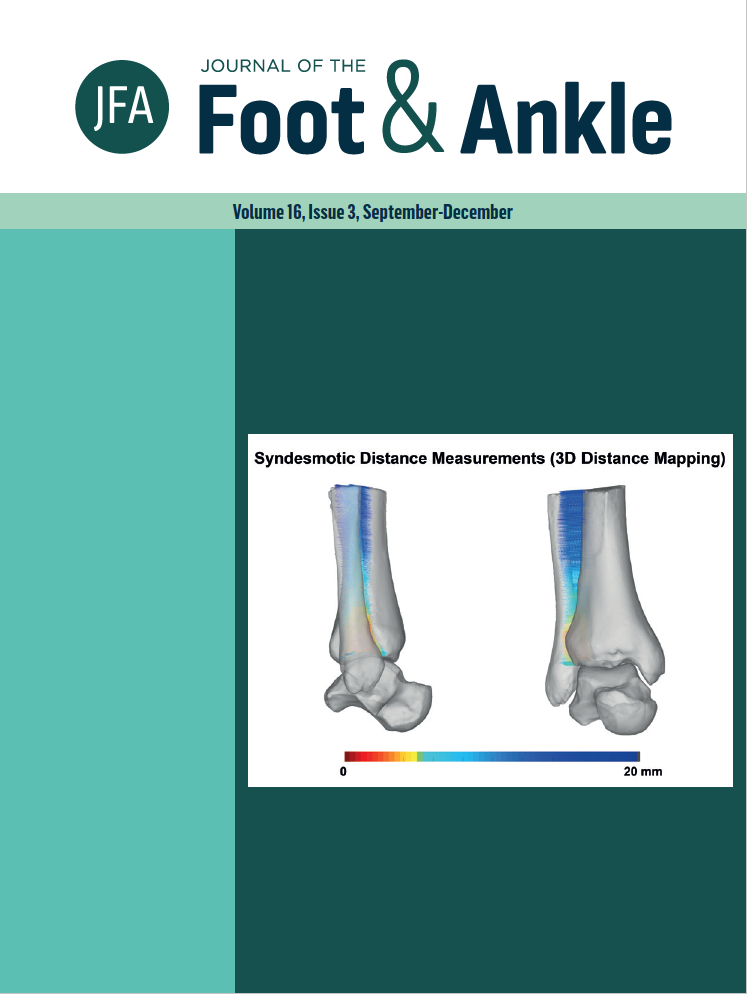Reconstruction of the extensor hallucis longus with a hamstring tendon autograft: a systematic review
DOI:
https://doi.org/10.30795/jfootankle.2022.v16.1644Keywords:
Autograft, Extensor hallucis longus, Hamstring tendons, Tendon injuriesAbstract
Objective: The purpose of this study was to systematically review the literature regarding the use of hamstring tendon (HT) autograft for extensor hallucis longus (EHL) reconstruction. Methods: A systematic search for studies addressing the use of HT autograft for reconstruction of nonrepairable EHL tendon injuries was performed in December 2021. The databases searched include Embase, Medline, Europe PMC, Cochrane, and Scopus. Predetermined inclusion and exclusion criteria were implemented, and appropriate studies were selected for review. Results: The database search resulted in one study that met the inclusion and exclusion criteria. Three additional studies met inclusion and exclusion criteria after screening the references of the selected study. A total of four studies were included in the final review. Clinical presentation, surgical technique, postoperative rehabilitation, clinical follow-up, and outcomes were recorded. All four studies reported single cases of EHL tendon reconstruction using a semitendinosus autograft with satisfactory clinical results and no complications. Patients may experience a five degrees decrease in range of motion or minimal decrease in hallux extension strength; however, all patients were asymptomatic and reported no limitations. Conclusion: Four case reports regarding EHL tendon reconstruction were reviewed and demonstrated using a semitendinosus autograft as a viable option with favorable outcomes and no complications. Level of Evidence IV; Systematic Review
Downloads
Published
How to Cite
Issue
Section
License
Copyright (c) 2022 Journal of the Foot & Ankle

This work is licensed under a Creative Commons Attribution-NonCommercial 4.0 International License.







